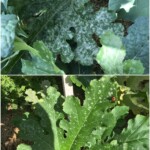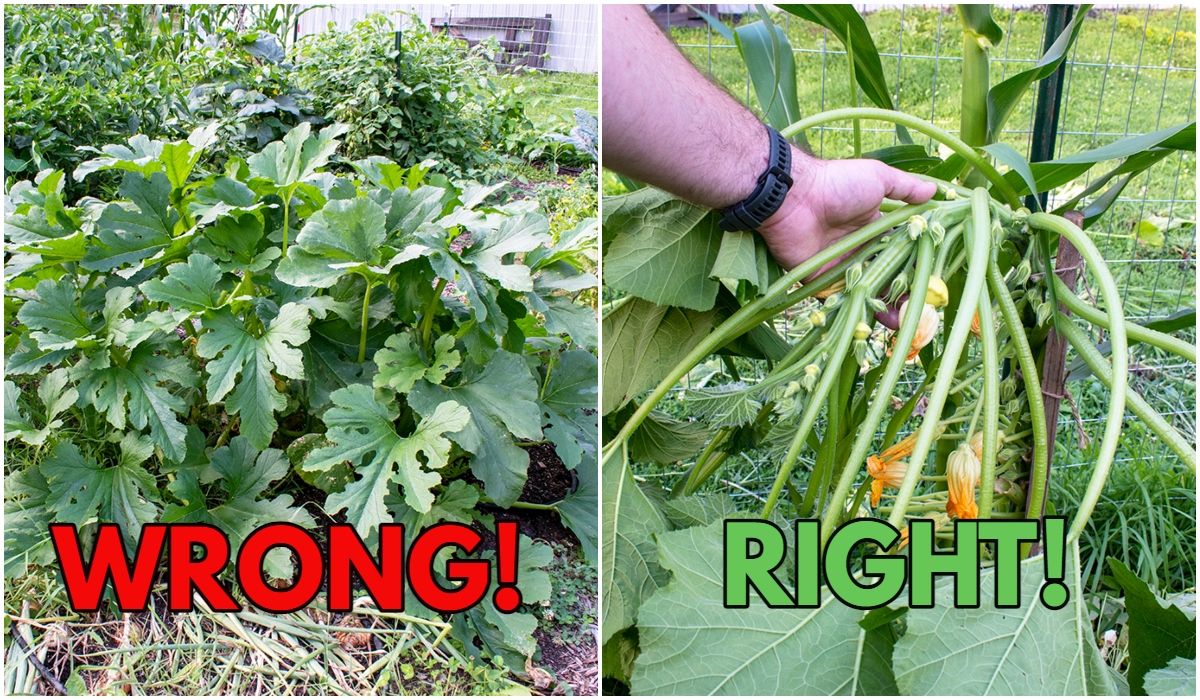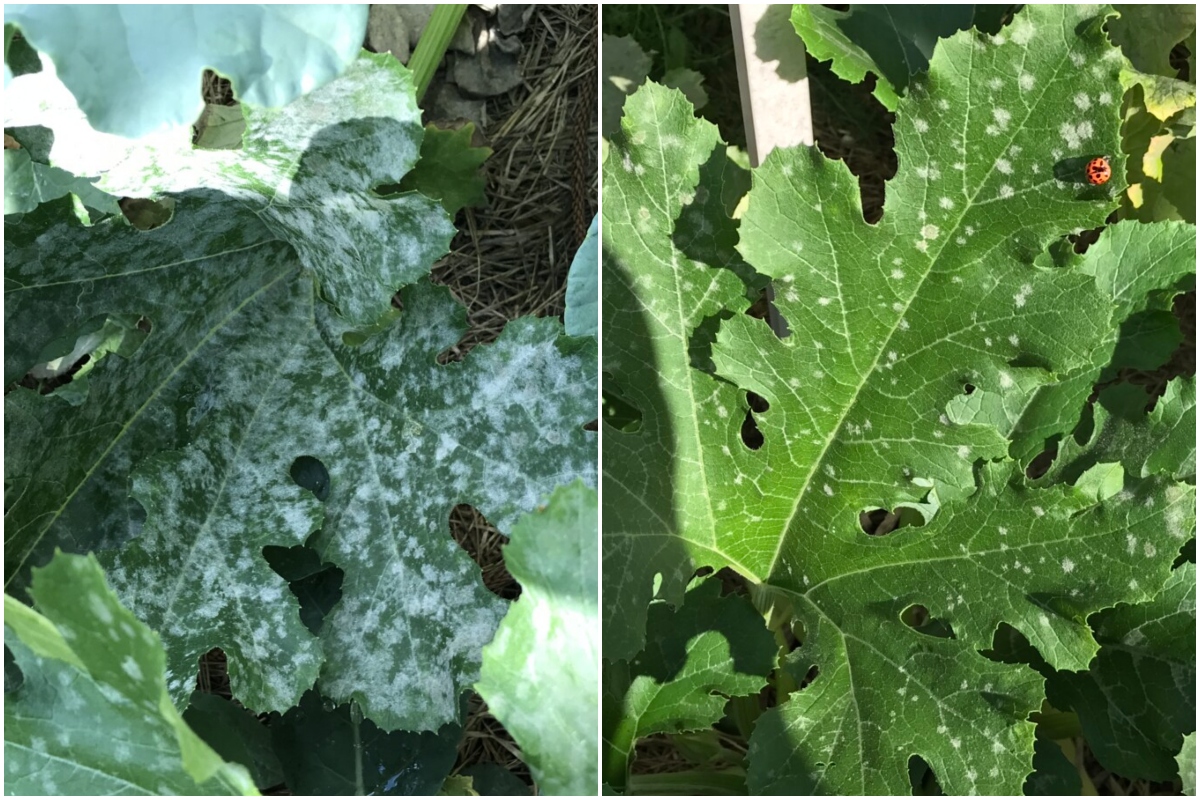
More than a handful of my gardening friends have expressed envy at my mild subtropical climate. However, gardening in a hot and humid region is fraught with challenges.
One of the most frustrating issues I’ve had to deal with is powdery mildew. I’ve tried many homemade and commercial remedies in the search for a successful solution – and finally I’ve got one that really works.
Powdery mildew is endemic to any damp climate. While research tells me it appears during dry conditions, that isn’t my experience.
It appears when it’s damp, when it’s dry, and everywhere in between.
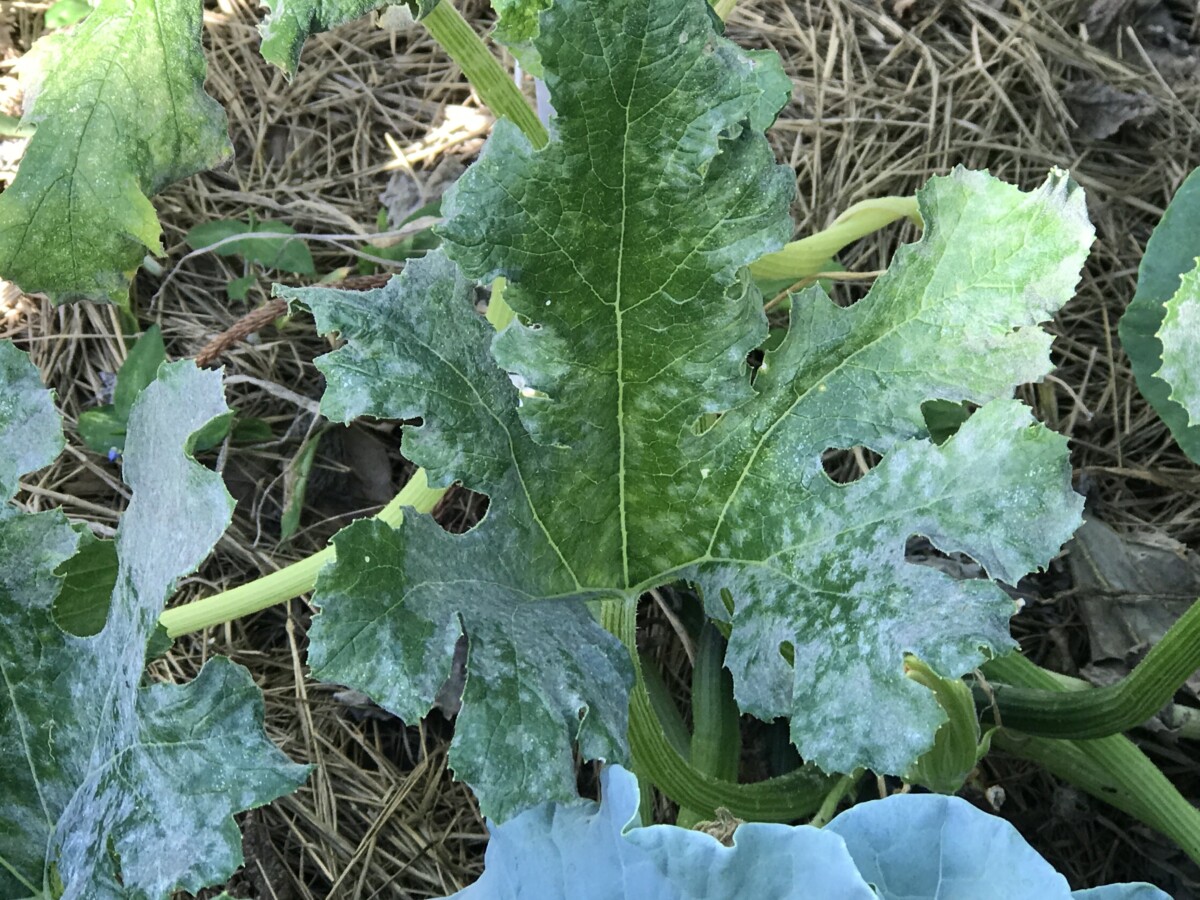
Not only does this infection look unattractive, it kills off these leaves, interferes with photosynthesis, and destroys my cucumbers and squash plants before they can even fruit.
It wasn’t until I started using a common household product that I could reliably harvest these vegetables from my garden.
My Desperate Search for a Remedy – all the ‘natural powdery mildew treatments’ that didn’t work.
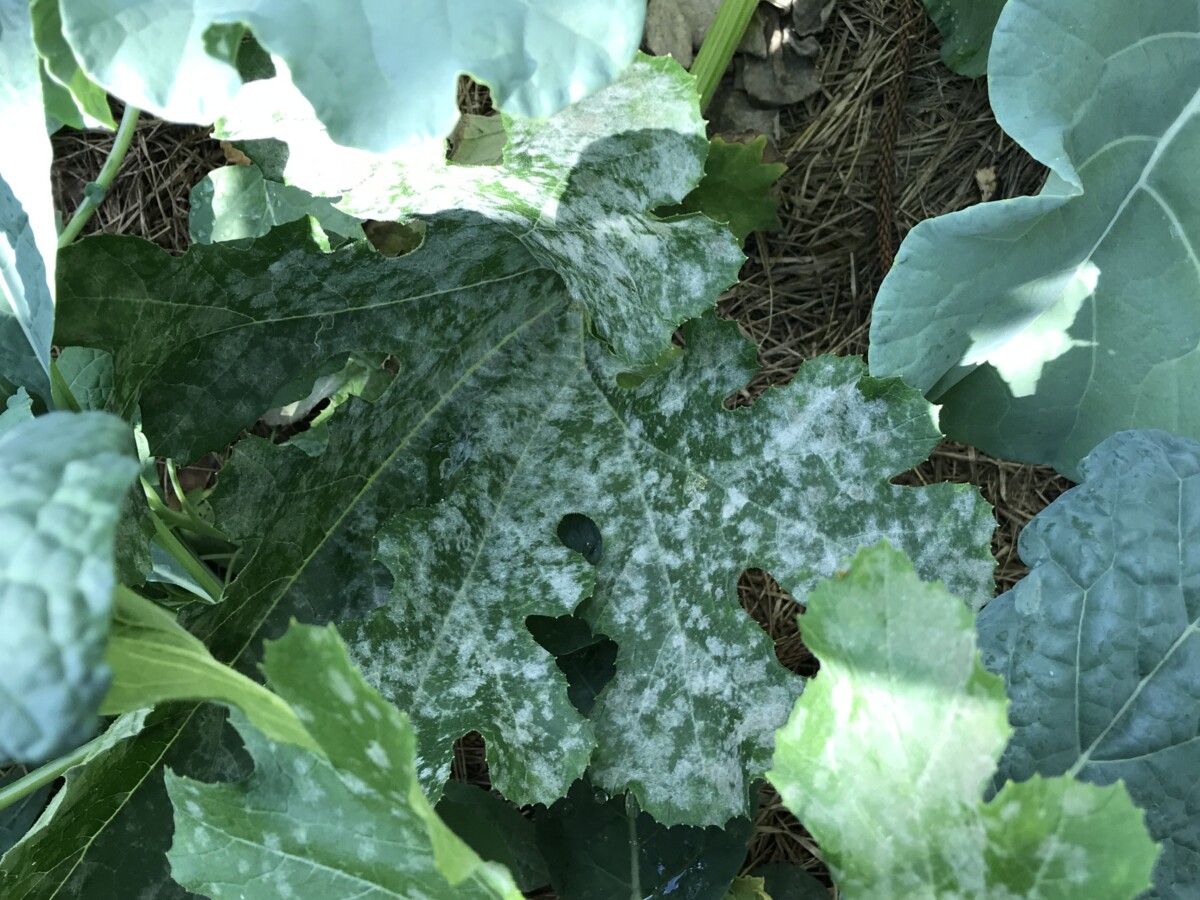
My search for a powdery mildew remedy was driven by desperation. You see, I only wanted to use products that were safe to use around my resident bees and butterflies. I didn’t even consider using something toxic.
At first, my wild panic in the face of this fungal menace led me to try several homemade treatments, including one suspicious concoction I found online that included vegetable oil and baking soda.
Maybe my timing was bad. Perhaps, I rushed and mixed up the ratios of ingredients. I only know that the next day, every single plant I sprayed it on was dead. (I did notice that this formula no longer appears online.)
Next, I funneled a small fortune into neem oil. I even got the “good stuff”— the cold-pressed organic brand.
Mostly, it just smelled bad and clogged up my garden sprayer. But it wasn’t a complete waste of money because it does work on aphids. I still have a small bottle I keep for emergencies. I haven’t had to use it much since I started giving the ladybugs more time to clean them up for me.
Maybe it was time for copper sulfate? Copper sprays are safe for wildlife, but you can only use them a few times during the season, or it builds up in the soil. So, if it washes off in the rain, you can’t just spray your plants again.
I live in a region with an official “rainy season,” so it only took a week before I hit the maximum application benchmark.
And I still had powdery mildew.
No matter how much I spent or how often I sprayed, I still couldn’t grow a zucchini to save my life. All of my summer squash and cucumber plants perished from powdery mildew within weeks, as the spores consumed the plants from the roots up.
Enter Hydrogen Peroxide
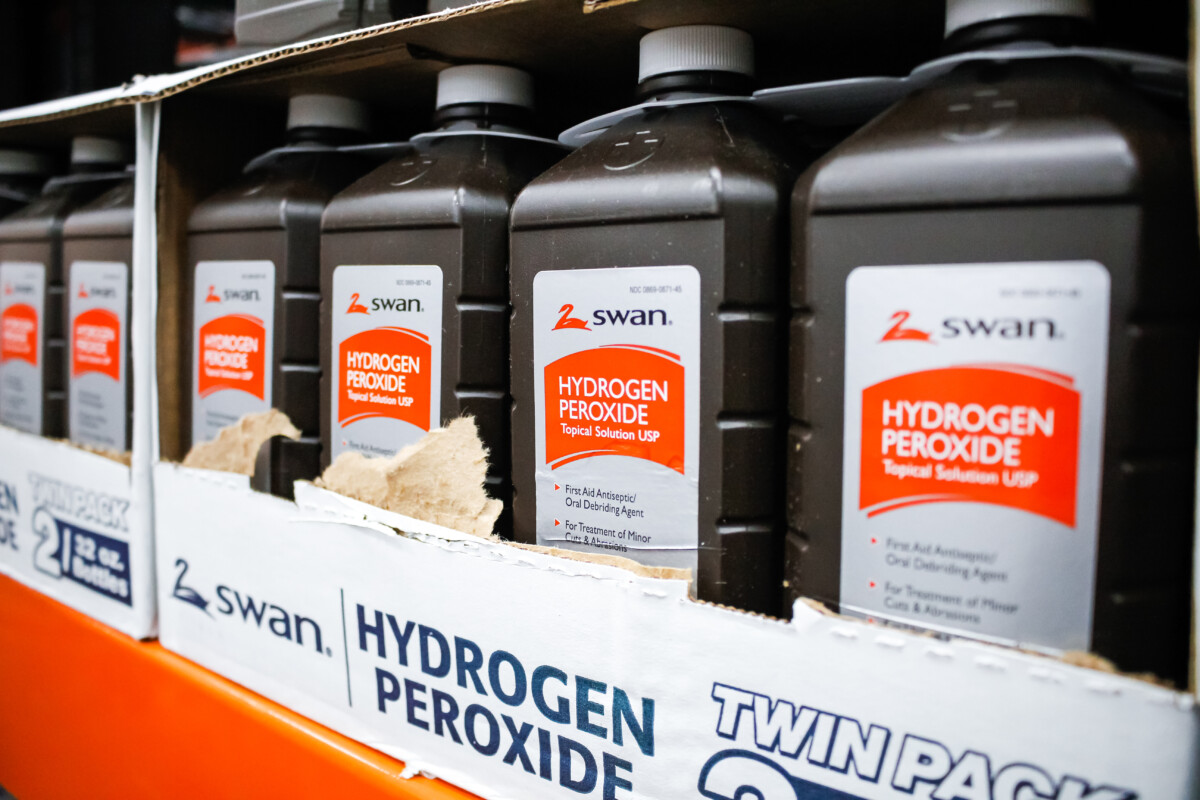
I persisted in seeking a solution, and some online research led me to hydrogen peroxide.
Why not? It was cheap, it didn’t smell, it was safe, it wouldn’t kill my bees. Best of all, I had plenty of it already on hand. It was worth a try, and I wouldn’t have to buy anything.
To my delight (and relief), it worked!
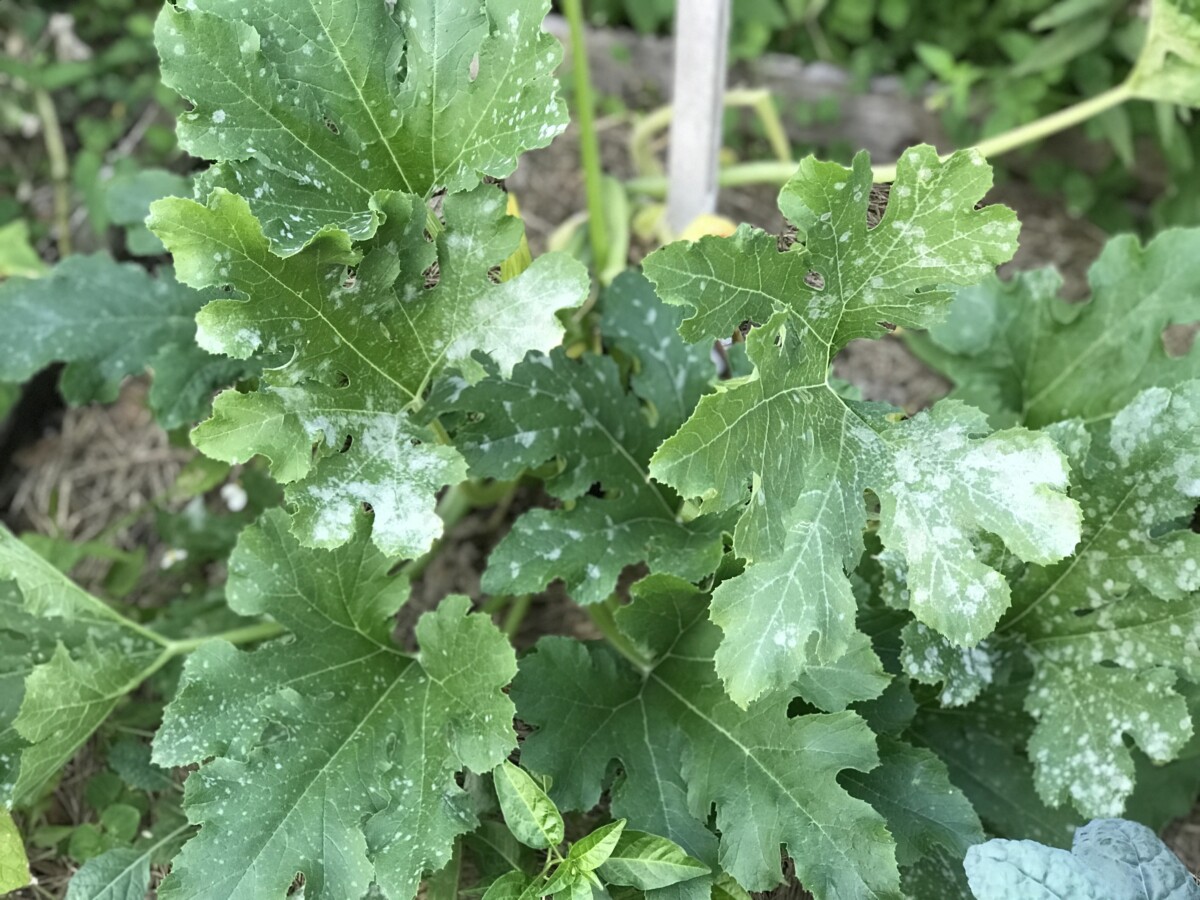
By this time, I only had a few cucumber plants left. But it was so effective that I’ve switched to it completely for preventing and treating powdery mildew on all my plants.
Hydrogen peroxide is the safest, cheapest, and most versatile fungicide for the garden. The trick is to make sure you mix it correctly before spraying your plants, or you could damage them.
How Hydrogen Peroxide Works to Destroy Powdery Mildew
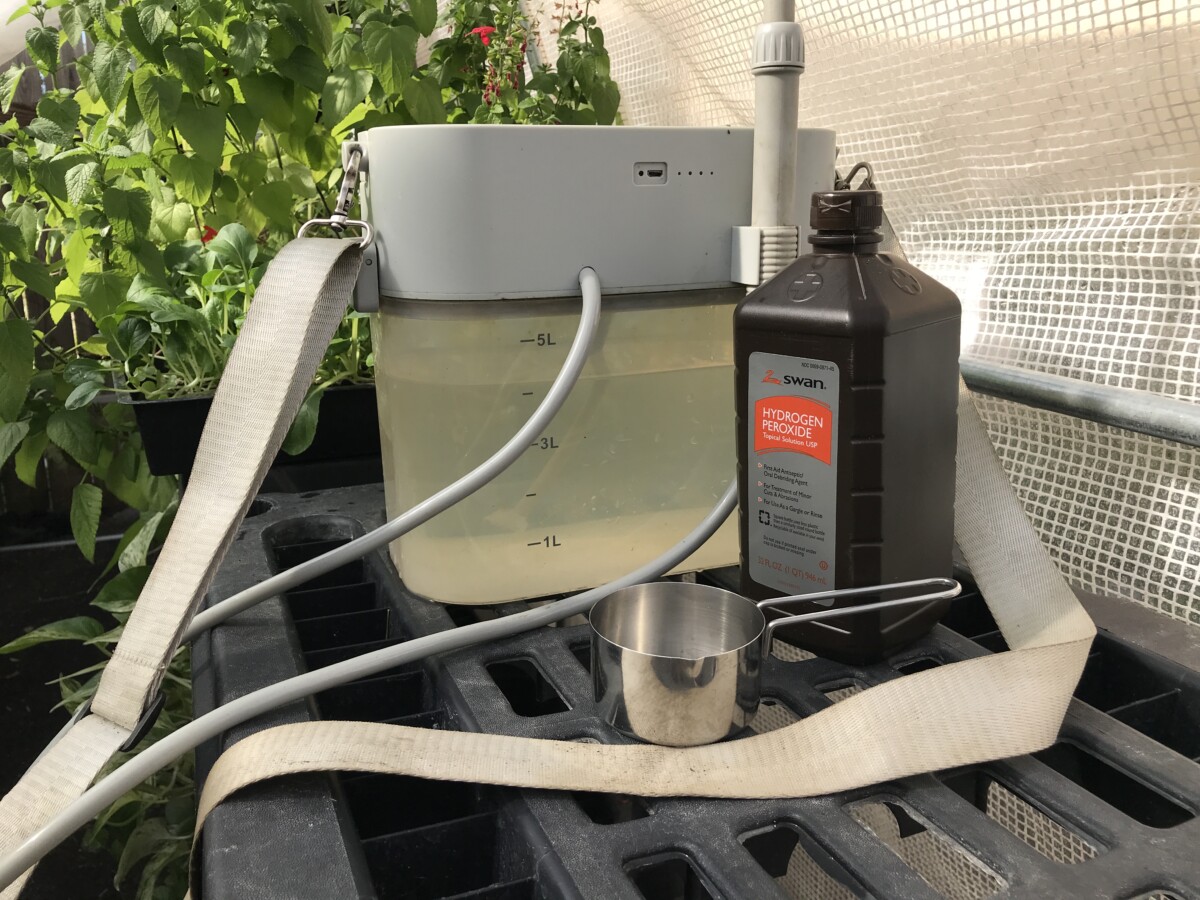
Hydrogen peroxide is basically water with an extra oxygen atom. When you spray it on your plants, that extra oxygen atom breaks away and damages the walls of the fungal cells. That means it can’t reproduce and spread to the rest of the plant.
Did you know that plants make their own hydrogen peroxide? Scientists think it works like a stimulant for rapid growth. It also triggers the plant’s immune system to improve its resistance to environmental stress.
So, hydrogen peroxide doesn’t just kill off powdery mildew — it also results in a stronger, healthier, more resilient plant.
How to Use Hydrogen Peroxide on Powdery Mildew
The good news is that using hydrogen peroxide as a powdery mildew remedy is simple and straightforward. All you need is the 3% hydrogen peroxide from your local dollar store, discount store or drug store.
You can find and use stronger formulas, such as 12% food-grade hydrogen peroxide or a horticultural concentration of 35%. However, you need to be very careful because it can burn your skin and damage your plants. The regular consumer-grade hydrogen peroxide of 3% works just fine.
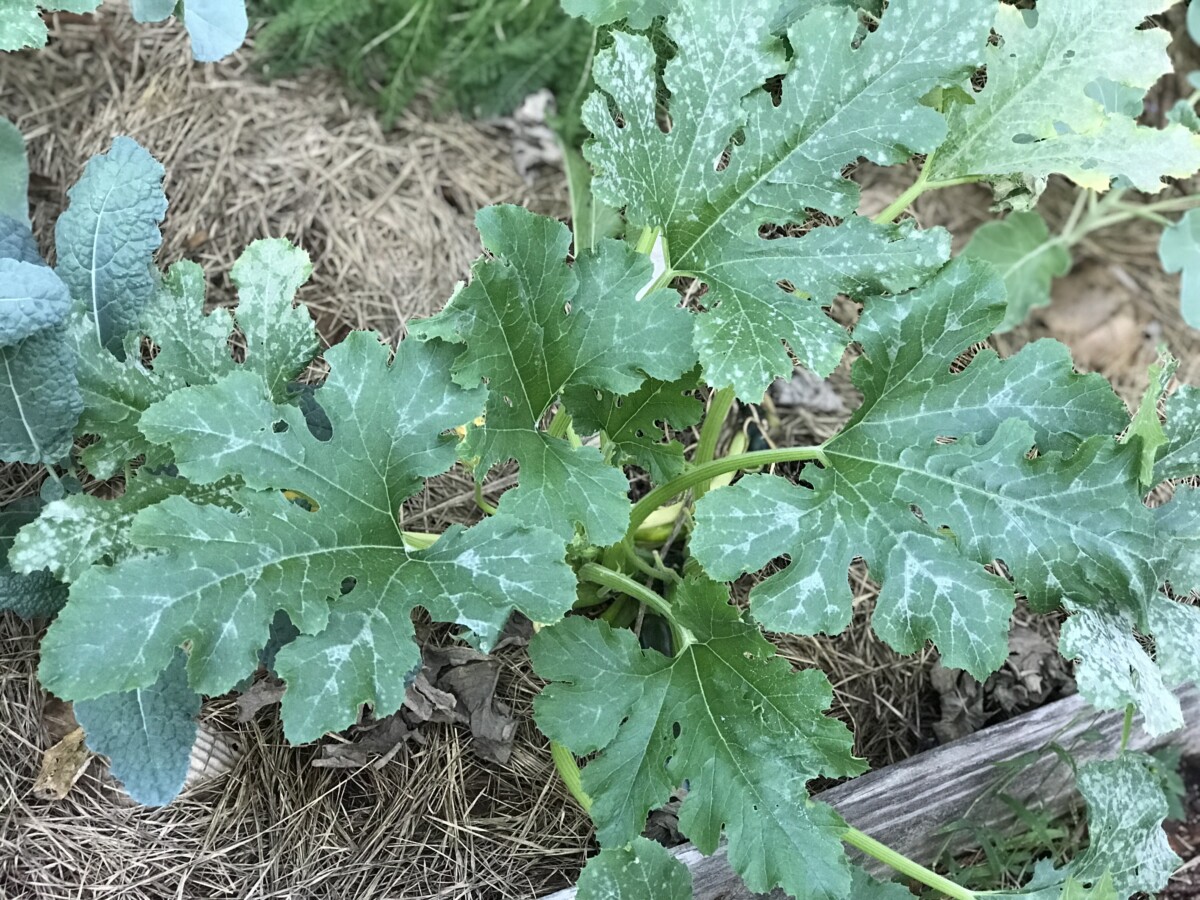
Timing
It’s best to wait until the plants are completely dry before spraying to ensure the mixture directly contacts and is absorbed by the spores.
Hydrogen peroxide breaks down easily in sunlight, so it’s best to spray early in the day or in the evening to ensure it has time to work before dissipating. I personally prefer to spray in the late afternoon or early evening when the day’s heat no longer has an edge.
Application
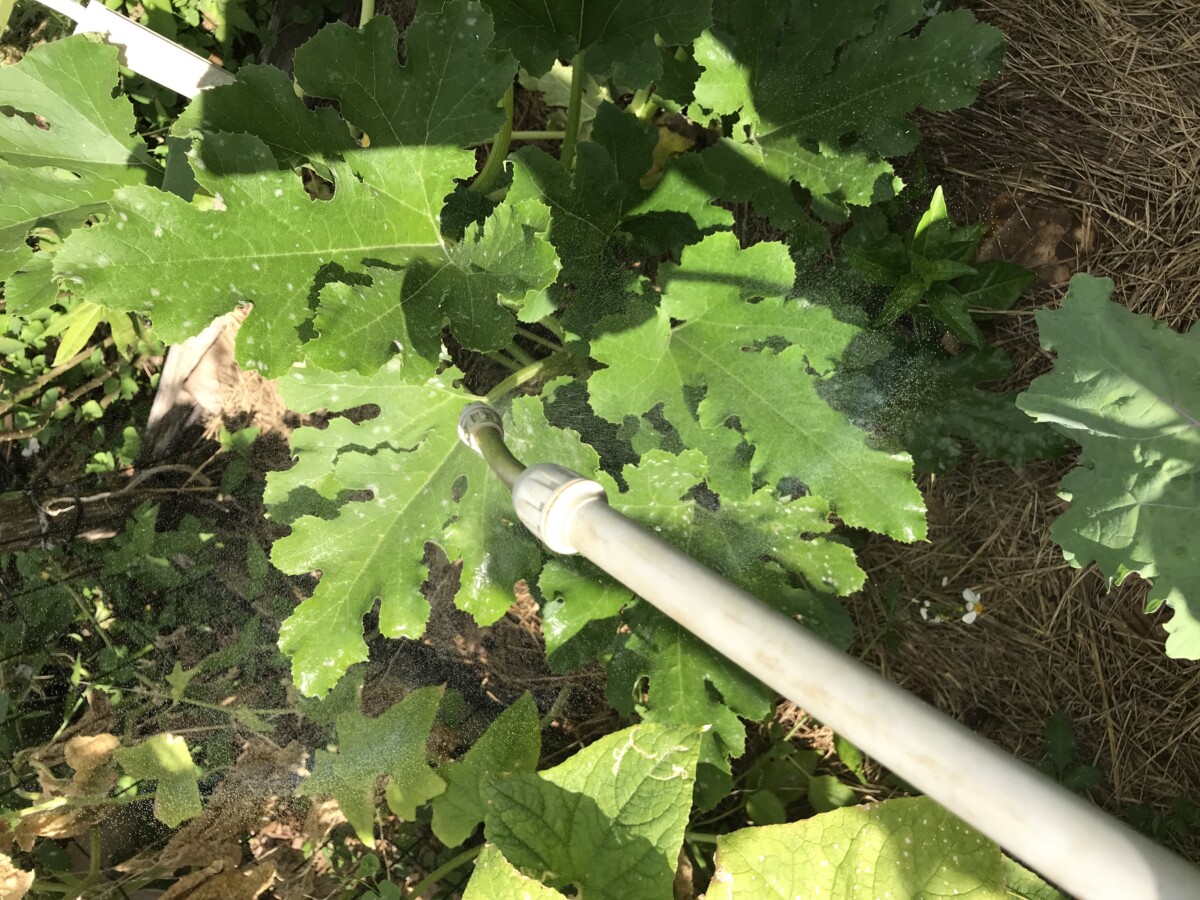
I use a battery-powered sprayer to apply my hydrogen peroxide solution. This allows me to cover both the tops and undersides of all of the leaves without getting fatigued and sloppy with the application.
Spray all leaves and stems to the point of run-off. Don’t worry about it adversely affecting the soil or any other nearby plants or foliage.
It isn’t strong enough at the right dilution rate to damage leaves. As Elizabeth points out, hydrogen peroxide is used extensively in the soil to improve aeration.
Besides, if there are powdery mildew spores on your squash, they may have spread to other plants too.
So, for general hygiene purposes, I also spray nearby plants, trellises, and other supports to take out pesky spores. I want to be sure they don’t reinfect my freshly treated crops.
The Formula
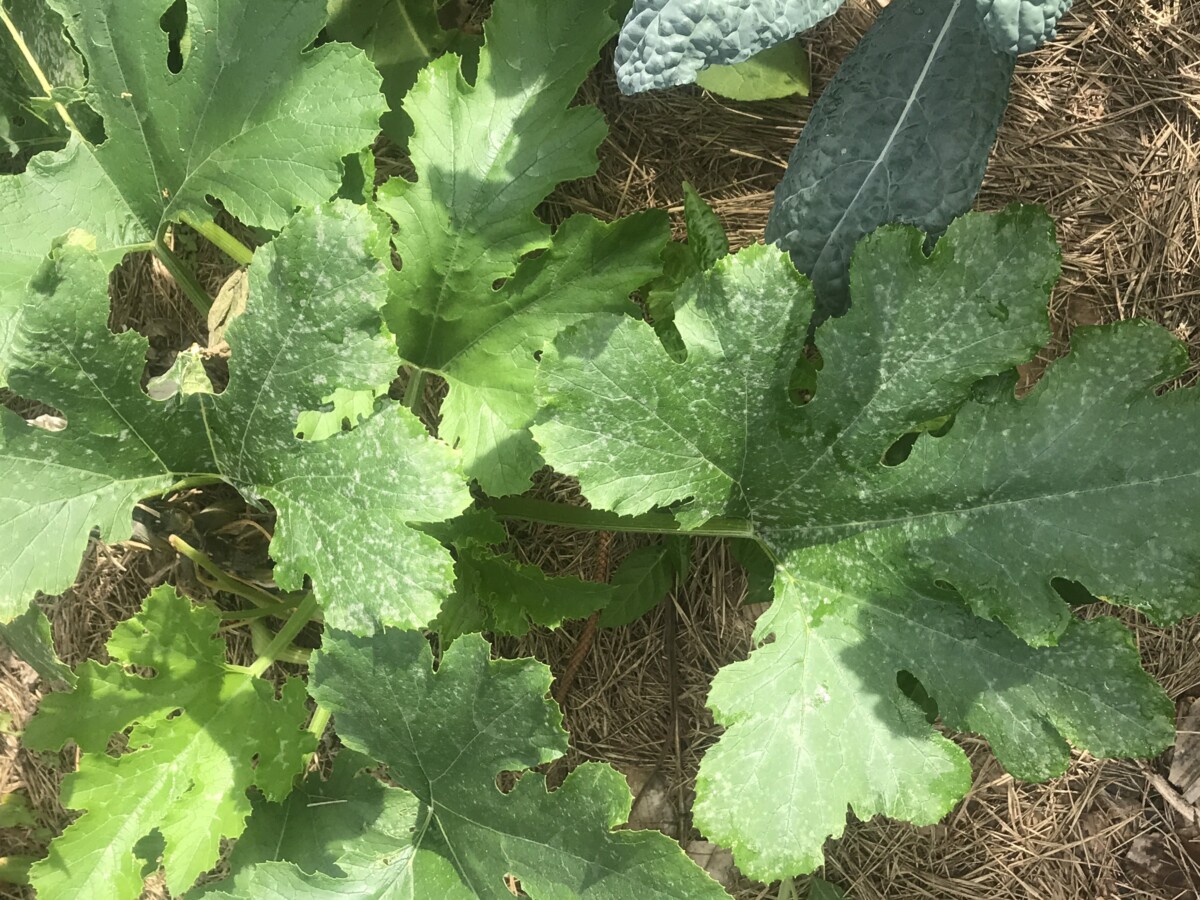
Proper dilution is critical when spraying your plants with hydrogen peroxide. The ratios vary depending on whether you’re using it to prevent powdery mildew or treat an active infection.
Prevention: As a preventative treatment, I use half a cup of 3% hydrogen peroxide to 1 gallon of water. This is a ratio of 1:32, or about 3%.
Treatment: The ratios are higher to treat an active powdery mildew infection, and gardening experts recommend starting with 1 part hydrogen peroxide to 9 parts water. This equals a dilution of about 11% hydrogen peroxide.
Some commercial agricultural formulas can go as high as 27% hydrogen peroxide. This is the extreme, however, and anything stronger than that can result in damage to the plant.
Treatment Frequency
To ensure the situation resolves in two weeks, I apply my powdery mildew treatment frequently. During an active infection, I spray every third day for two weeks. For prevention, I spray the more dilute formula once a week.
Unfortunately, an unexpected rain can mean starting over with both prevention and treatment. However, when the weather remains dry, powdery mildew is resolved within two weeks. It’s perfectly safe to spray again if it rains, but wait until your plants have completely dried. You can also increase the frequency of treatment to every other day if your weather isn’t cooperating with your treatment plans.
That’s why hydrogen peroxide is my go-to method for treating powdery mildew. Its low cost and safety mean I can reapply it whenever I need to without much impact on the environment or my budget.
Making Sure It Works Fast
While hydrogen peroxide is foolproof against powdery mildew, you can’t be foolish about using it. Keep the following in mind so you can be sure it works as quickly for you.
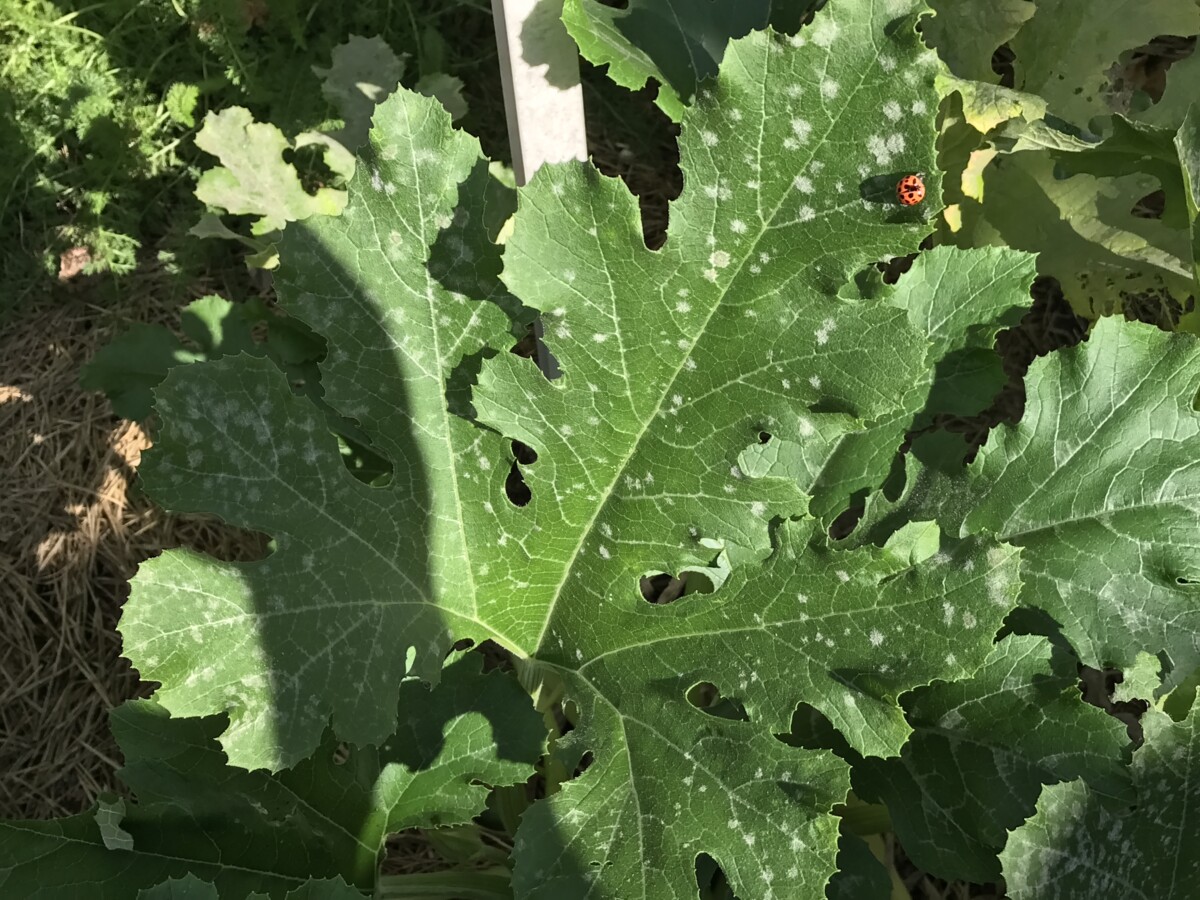
Length of Treatment
Keeping consistent with your powdery mildew remedy is important. Powdery mildew produces new spores every 3 to 14 days, so you need to use it every two to three days for the entire two weeks.
Rainfall may interfere with the treatment plan, but you can add another week to ensure you interrupt the cycle completely.
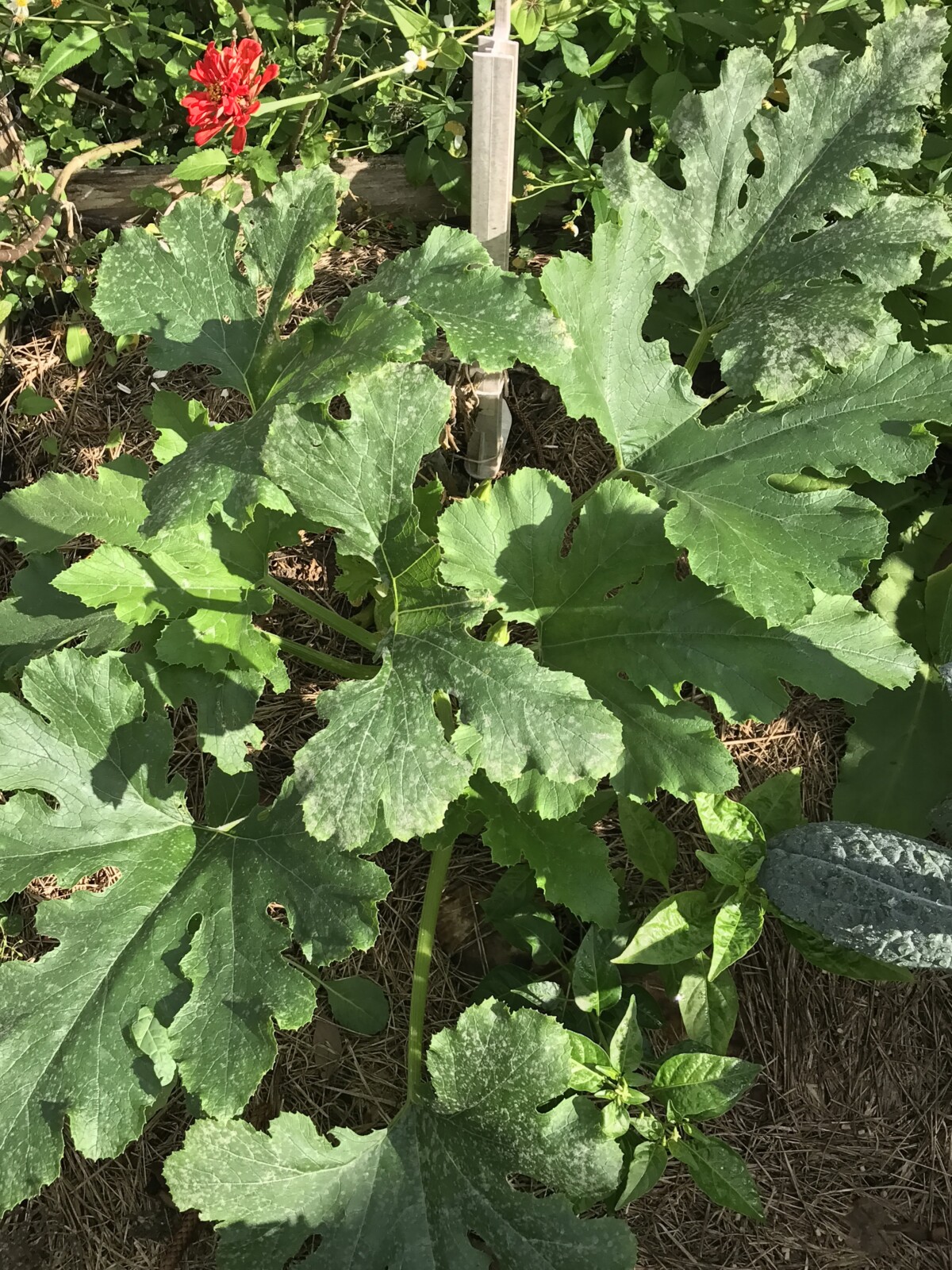
Prune Damaged Leaves
When leaves become so badly affected by powdery mildew that they literally crumble to pieces, they can’t be saved. Your best bet is to remove and dispose of them. Recently, I tried to save a few yellowed leaves on an infected cucumber plant with no improvement. However, once I trimmed off the damaged leaves, the infection halted on healthier leaves, and none of the new growth was affected at all.
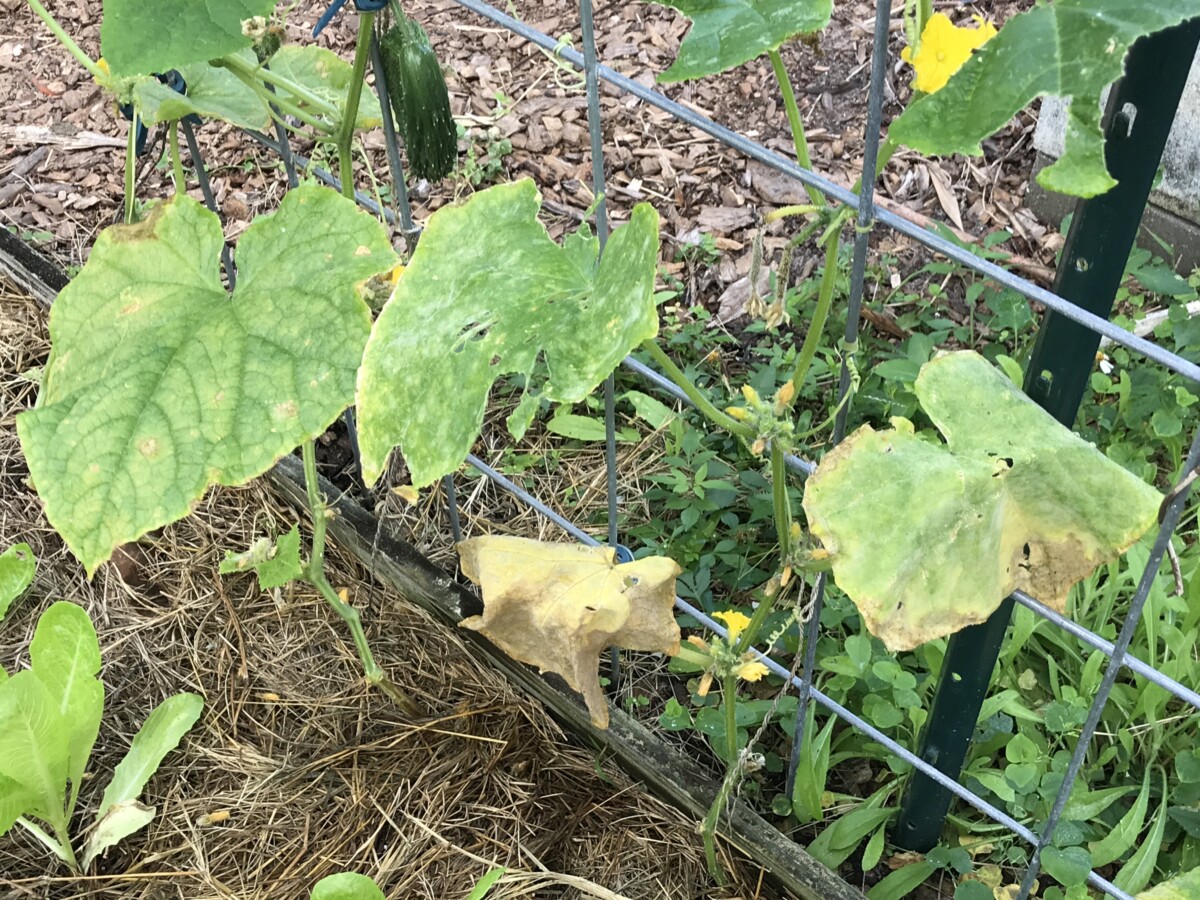
Improve Airflow
Removing badly infected leaves also improves the circulation of air around the plants, which helps keep the infection from spreading from plant to plant. Pruning also allows more sun exposure below the plant canopy. Powdery mildew thrives in cool, damp places, and letting in more sunlight helps keep the infection at bay.
Apply Thoroughly
Hydrogen peroxide is easy to find and cheap to buy, so there’s no need to be stingy with it. Spray the entire plant top and bottom, and don’t forget to soak the stems or any developing fruits as well.
Additional Treatments
Hydrogen peroxide is very effective, but another great powdery mildew remedy you can make yourself is a mixture of regular cow’s milk and water. You use 1 part milk to 2 parts water and spray it on affected plants directly in sunlight. It costs more than hydrogen peroxide, but it’s a great way to use up expired milk you’d otherwise throw away.
Why We Need a Remedy for Powdery Mildew That Works
While searching for a powdery mildew remedy I could rely on, I found that most gardening experts say the best approach is to choose resistant varieties.
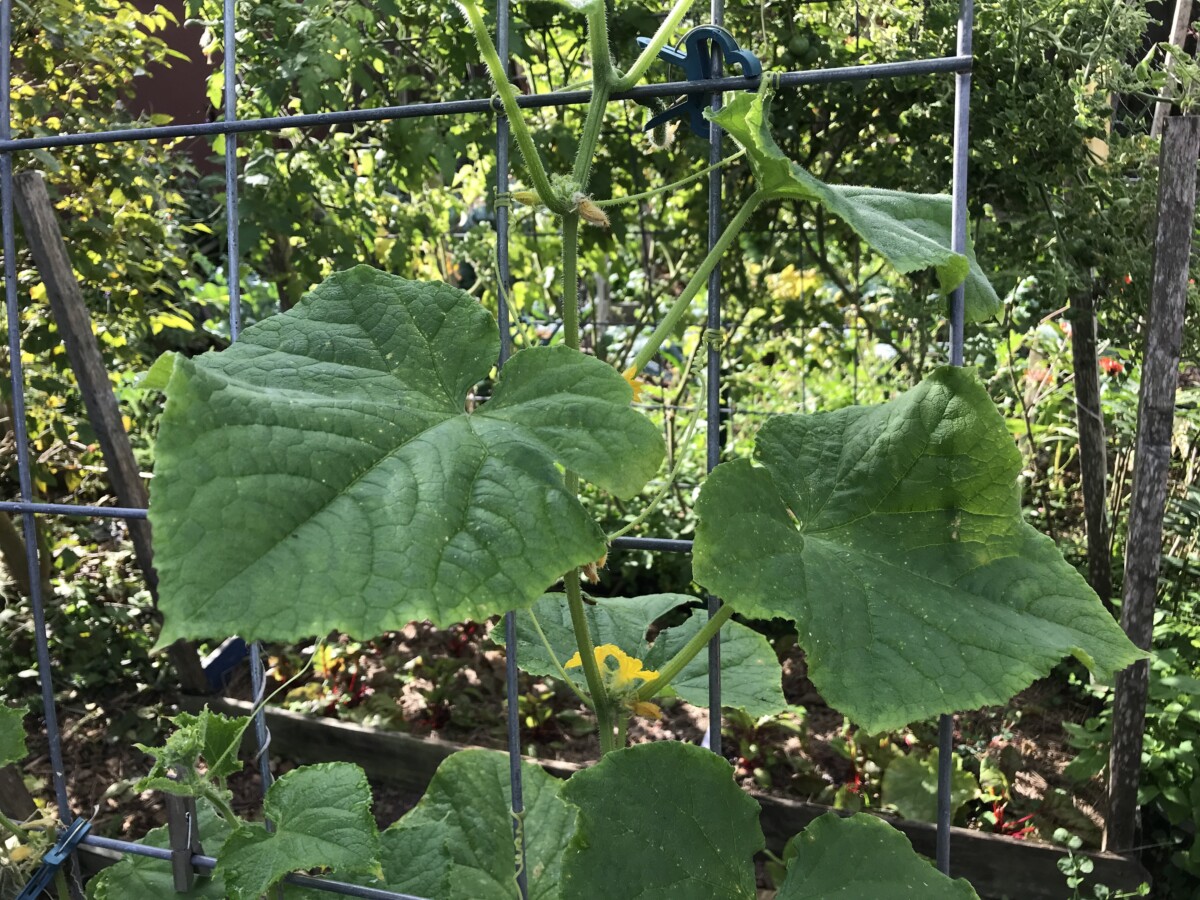
But “resistant” does not mean immune — particularly when it comes to fungal diseases in vegetable plants. In fact, I noticed a bit of black spot on a highly bred “resistant variety” of basil just the other day.
Sometimes, lectures about what we “should have done” can seem a bit maddening. While gardening involves a lot of trial and error and will always be a lifetime learning process, some days, you just want cucumbers.
So, I’ll stick to using my hydrogen powdery mildew remedy. It’s cheap, it’s safe for local wildlife, and it works in two weeks.
Read Next:

Get the famous Rural Sprout newsletter delivered to your inbox.
Join the 50,000+ gardeners who get timely gardening tutorials, tips and tasks delivered direct to their inbox.


